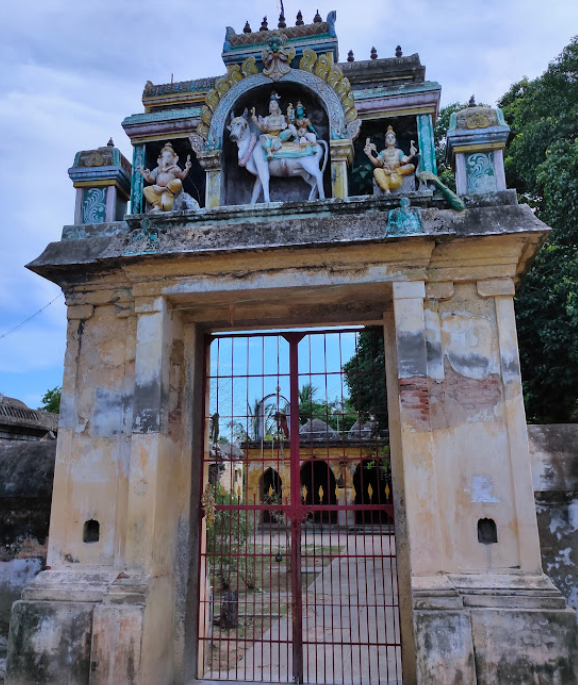King Indira, the ruler of the Devas, once sought a Shiva Linga for worship during his visit to Earth. Unable to find one, he gathered sand from the Cauvery river to create a Linga for his devotion. Indira sang a melodious hymn, asking for the Lord's dance darshan. Pleased with his devotion, Lord Shiva granted him the desired darshan, earning the name Gana Nardana Sankara, meaning "Lord who danced to a devotional song." When Indira departed, he left the Linga he had created behind, and traces of his finger symbols can still be seen on it.
Sthala Puranam :
The puranam of this temple is intricately linked to that of the Parimala Ranganathar temple in nearby Indalur. According to the Puranas, Chandran (the Moon God) married the 27 daughters of Daksha, promising to love each equally, but he was particularly fond of Rohini. The other sisters complained, prompting Daksha to diminish Chandran's lustre every 14 days. Following his guru Brhaspati’s advice, Chandran prayed to Vishnu and travelled to this place, where he worshipped Lord Shiva and was able to restore his lustre. Consequently, Shiva is known here as Somanathar (or Arul Somanathar), while Parvati is referred to as Aditya Varadambikai, having blessed the Sun God (Suryan) who also prayed to her here.
Indra, wishing to witness Lord Shiva's cosmic dance, performed puja with this intention. When he arrived at the temple, he found no Lingam to worship. In desperation, he crafted a Lingam from sand taken from the Kaveri river and sang devotional hymns to Lord Shiva. Pleased with his devotion, Shiva performed his cosmic dance for Indra at this site, earning the name Gaana Nardhana Sankarar. It is believed that devotees who visit this temple will experience both material and spiritual gains within 12 years.
The Lingam made by Indra is said to remain today, which is why no abhishekam’s are performed on it; it is covered with metal. Indra's finger marks from when he sculpted the Lingam can still be seen.
A demon named Thanmasudhan was cursed to become a crab. Following Sage Narada's counsel, he earnestly prayed to Lord Shiva at this temple. Pleased with his devotion, Shiva relieved him of his curse and allowed him to merge into the Lingam through a hole, which is why Shiva is also known as Karkateswarar here. This temple is particularly auspicious for those under the Kataka rasi (Cancer zodiac).
According to the Puranas, a great flood (pralayam) occurs at the end of each yuga, destroying all. However, it is believed that Needur has never faced such destruction, leading to its name (Needu in Tamil means "continuing"). Historically, the town has been known by various names, including Magizhavanam, Vagularanyam, and Magizharanyam.
As Shiva and Parvati are the presiding deities of all planets, and since Suryan and Chandran worshipped here, there is no separate Navagraha shrine at the temple.
Additionally, Needur is recognized as the mukti sthalam of Munaiyaduvar Nayanar.
